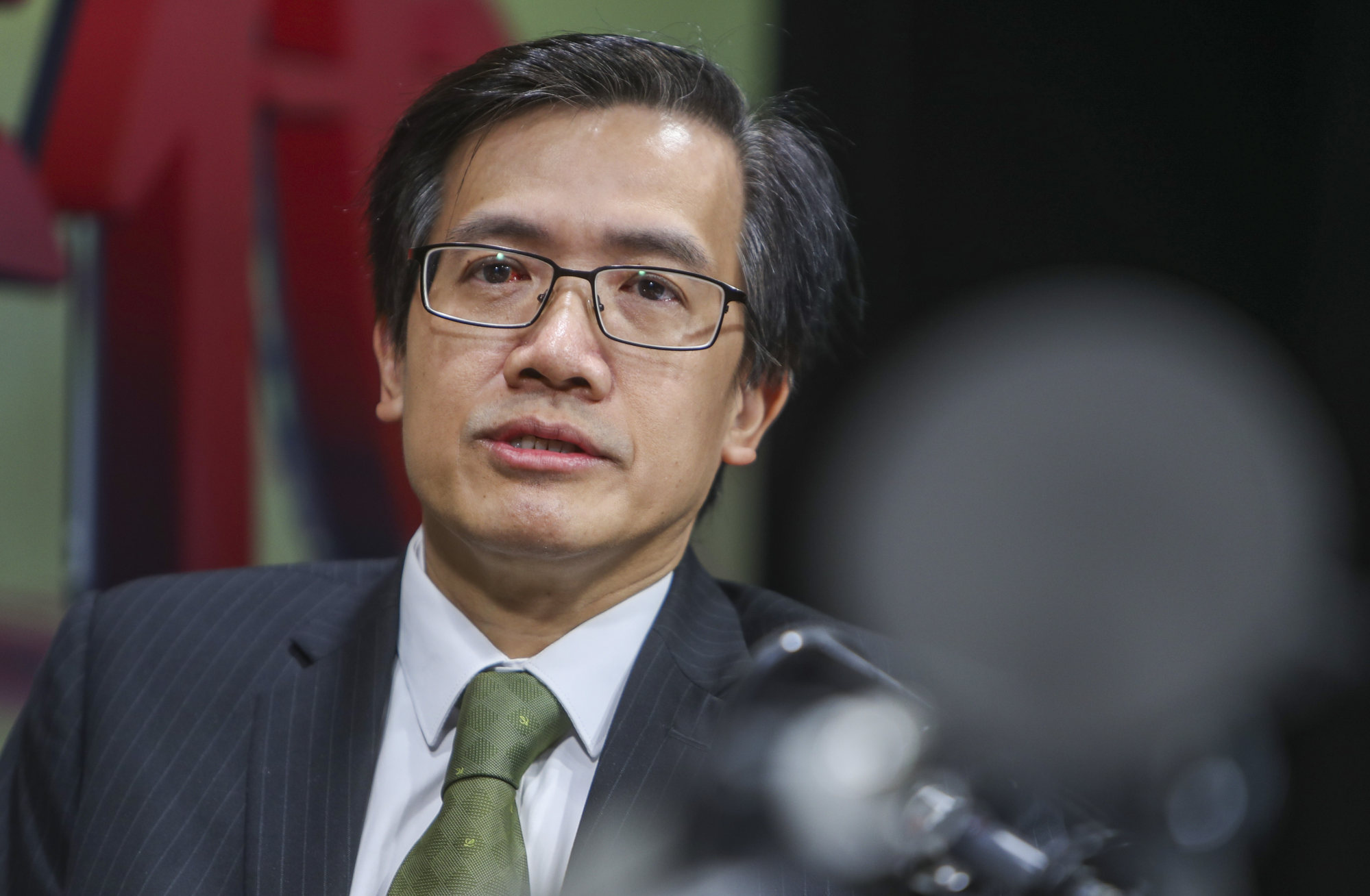
Nursing staff shortage, insufficient equipment testing blamed after tube detaches from Hong Kong patient’s ventilator in isolation ward
- Dr Raymond Lee says he believes incident caused by administrative error, adding nurses’ high workload might have prevented them from monitoring equipment
- Middle-aged tuberculosis patient was left in critical condition after his heart stopped when ventilator tube became loose in isolation ward
A staff shortage and insufficient equipment testing could have been contributing factors in a suspected medical blunder that left a Hong Kong man in a critical condition after a tube detached from a ventilator, an expert and a patient representative said on Friday, with the latter expressing disappointment over a three-day delay in reporting the incident.
Kwong Wah Hospital in Yau Ma Tei on Thursday revealed that the 51-year-old tuberculosis patient’s heart stopped when the ventilator tube became loose in an isolation ward on February 5.
Dr Raymond Lee Wai-chuen, director of critical care medicine at Hong Kong Sanatorium and Hospital, said he believed the incident was caused by an administrative error rather than a clinical one.

“It happened in the hospital’s new complex,” he told a radio show on Friday. “They put the old system in the new ward. The environment is different. Did they test whether the system can operate?
“It is possible that when they tested the system, they simply turned on the equipment. They may not place ventilators and other monitoring devices in the ward to see if they will affect the Wi-fi or the alarm system.”
Hong Kong patient in a critical condition after tube detaches from ventilator
The hospital’s new complex started offering services last April.
The patient remained in a critical condition after he was resuscitated, regained a pulse and was sent to an intensive care unit for treatment, the hospital on Thursday said.
It added the ventilator had been functioning when the tube disconnected, but hospital staff did not hear the safety alarm because of the isolation ward’s double doors.
The nurses’ station did not receive a warning from the remote-monitoring system connected to the patient’s vital signs machine, it noted.
Hong Kong medical experts caution against labelling infant’s death as blunder
According to the hospital, a preliminary investigation found the patient’s body movements might have caused the tube to become disconnected even though he was strapped to the bed. An investigation committee had been set up, it added.
But it stopped short of apologising to the family.
The doctor suspected the ward environment was “unfitting” for the patient.
“The ward has 40 patients and only seven nurses. It is not very reasonable and ideal. One nurse has to take care of six patients who require a lot of care,” Lee said.
“The nurses’ high workload might have also prevented them from sitting at the nursing station and monitoring the equipment. Even if the station received the warning, it is possible that no one noticed.”
Doctors in the dock: ‘Hong Kong needs guidelines for when blunders become crimes’
He said that in the intensive care unit where he worked, speakers were connected to the patient beds and a broadcast system outside the ward, which was “simple and practical”.
Lee also said those with pulmonary tuberculosis were required to stay in isolation wards that were normally equipped with two doors, but he questioned a decision to move the patient out of the intensive care unit.
“After Sars and Covid-19, intensive care units should be equipped with wards that can handle these kinds of infections with transmission risks,” he said.
“I believe the hospital removed him from the intensive care unit because he had stayed there for a long period, from December 16 to January 5, so they wanted to vacate the bed.”
2 Hong Kong doctors arrested over patient’s death following medical blunder
Lee said it was ideal for medical staff to constantly monitor the patient.
“But in these isolation wards, it is time-consuming for the staff to put on and remove the protective wear every time they go in and out,” he said. “Thus, most of the time, it is rare to keep checking on the patients in these wards.”
He said at his hospital, staff would usually extend the length of the ventilator tube to allow space for the patients to move around and prevent the tube from easily detaching.
The investigation committee had to look into why the alarm was not received and whether staff had enough training to cope with such patients, he added.

Alex Lam Chi-yau, chairman of concern group Hong Kong Patients’ Voices, agreed with Lee that it was due to an administrative error, adding the hospital reporting the incident three days after it had occurred was “disappointing”.
“When the hospital needs to rely on the use of machines due to insufficient manpower, the management has to ensure the proper functioning of these machines, such as maintenance and testing for the machines and the signal transmission system,” he told the same programme.
Hong Kong authorities probe medical blunder after child receives empty jab
“Has the new hospital complex failed to do so? If so, I believe the management is greatly responsible.”
The hospital should ensure sufficient manpower to regularly check on patients who required a high level of care, he added.
“The management of the hospital and Hospital Authority should not brush aside this incident because if the issues are related to the alarm system rather than the ventilator itself, they should re-evaluate whether the hospital is still safe for treating patients,” he said.

